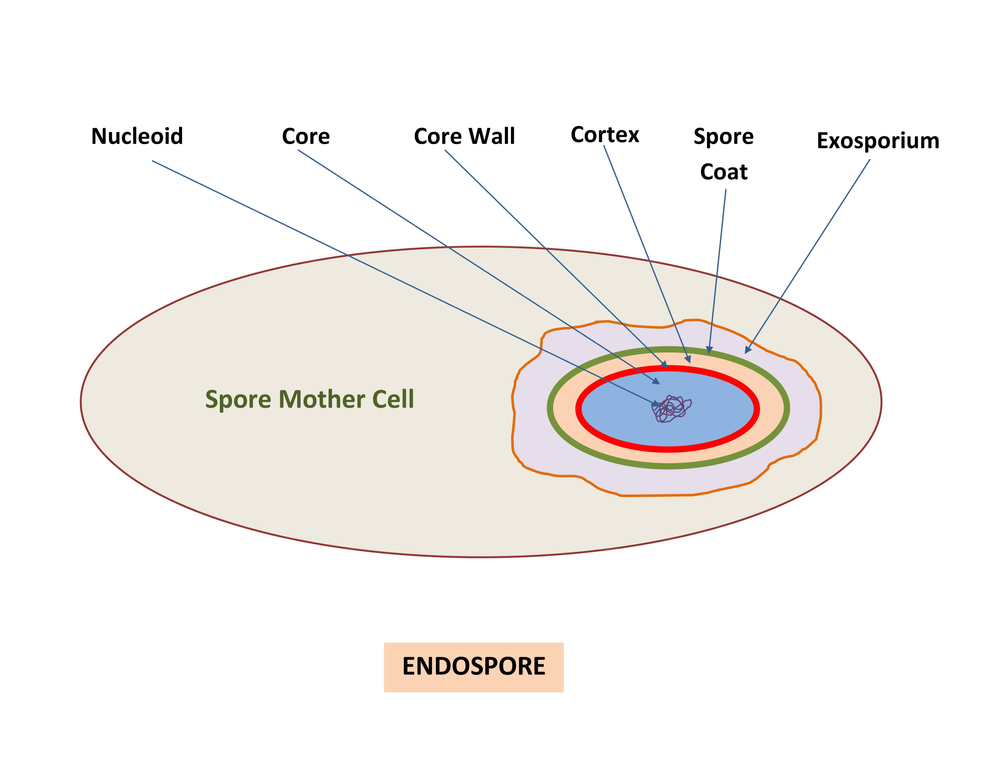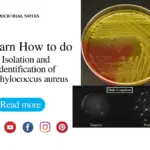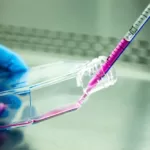Introduction
There are several types of gram-positive bacteria, such as Bacillus, Clostridium, and Sporosarcina (rods and cocci, respectively), that can make an endospore, which is a hard, dormant structure.
Also read: Bacterial Morphology: size, shape, and arrangements
Endospores form inside the living cells of bacteria and are very resistant to things like heat, ultraviolet light, gamma radiation, chemical disinfectants, and drying out. Some endospores have even been alive for about 100,000 years.
Endospores are very important in food, industrial, and medical microbiology because they are resistant and some types of bacteria that make endospores are dangerous pathogens. it’s important to be able to sterilize both liquids and solids.
it can survive boiling for an hour or more, so many things need to be sterilized in autoclaves. Endospores help organisms stay alive in the environment when there isn’t enough water or food.
it is also very interesting from a theoretical point of view. Because bacteria make these complex structures in a very organized way over the course of a few hours. spore formation is a good way to study how complex biological structures are put together. Bacillus subtilis, which makes endospores, has become an important model organism because of this.
Both light microscopes and electron microscopes can be used to look at endospores. Endospores are resistant to most stains, so they show up as colorless spots on bacteria stained with methylene blue and other simple stains. To see them clearly, special endospore stains are used.
Position of the endospore
The position of the endospore in the mother cell (the sporangium) can vary from species to species, which can help with identification. Endospores can be in the middle, near one end (called “subterminal”), or at the end. Some endospores are so large that they make the sporangium to grow.
Structure of endospore
Electron micrographs show that the structure of an endospore is very complicated. The exosporium is a thin, fragile covering that is often around the spore. Under the exosporium is a spore coat, which is made up of several layers of protein and can be quite thick. It makes the spore resistant to chemicals because many toxic molecules can’t get through it. It is also thought that the spore coat has enzymes that help the seed to grow.
Under the spore coat is the cortex, which can take up as much as half of the spore’s space. It is made of peptidoglycan that is less cross-linked than that in vegetative cells. The spore cell wall, also called the core wall, is inside the cortex and surrounds the protoplast, which is also called the spore core. The core has normal cell parts like ribosomes and a nucleoid, but it doesn’t do anything metabolically.

Why endospore is resistant?
We still don’t know why the endospore is so resistant to heat and other things that would normally kill it. Up to 15% of the dry weight of the spore is made up of dipicolinic acid complexed with calcium ions. This is found in the core. Long ago, people thought that dipicolinic acid played a direct role in heat resistance, but now scientists have found heat-resistant mutants that don’t have dipicolinic acid.
Calcium makes things more resistant to wet heat, oxidizing agents, and sometimes dry heat. It’s possible that calcium-dipicolinate keeps the nucleic acids stable in the spore. Small DNA-binding proteins (SASPs) that dissolve in acid can also be found in the endospore. They saturate the spore’s DNA and protect it from heat, radiation, drying out, chemicals, and other dangers.
Heat resistance seems to depend a lot on the dehydration of the protoplast. The cortex may remove water from the protoplast through osmosis, protecting it from damage from both heat and radiation. The spore coat also seems to keep enzymes and chemicals like hydrogen peroxide from damaging the spores. Last, spores have some enzymes that fix DNA. Once the spore sprouts and the cell starts to work again, the DNA is fixed.
In short, the heat resistance of endospores is probably caused by a number of things, such as the stabilization of DNA by calcium-dipicolinate and acid-soluble proteins, protoplast dehydration, the spore coat, DNA repair, and the more stable nature of cell proteins in bacteria that have adapted to grow at high temperatures, among other things.
Endospore formation
Spore formation (endospore formation) usually starts when growth stops because there aren’t enough nutrients. It is a long and complicated process that can be broken down into seven steps.
- In stage I — there is the formation of an axial filament of nuclear material.
- In stage II — Then, the cell membrane folds inward to enclose part of the DNA and make the forespore septum.
- In stage III — The membrane keeps growing and wraps a second membrane around the young endospore.
- In stage IV — Then, the cortex is put down between the two membranes, and calcium and dipicolinic acid build up.
- In stage V —The cortex then gets protein coats.
- In stage VI — The endospore becomes mature.
- In stage VII — Finally, lytic enzymes break down the sporangium, which lets the spore escape.
Bacillus megaterium needs about 10 hours to make spores.
Endspores to a vegetative form
The process of turning dormant spores into active vegetative cells seems almost as complicated as sporulation. It happens in three steps: activation, germination, and growth. Activation is the process of getting spores ready to grow, and it usually happens after a treatment such as heating.
The next step is germination, which is when the spore wakes up from its dormant state. During this process, the spore swells, ruptures, or gets absorbed into the spore coat, the spore loses its ability to resist heat and other stresses, its ability to bend, its ability to release spore parts, and its metabolic activity goes up. After activation, germination can be triggered by a number of normal metabolites or nutrients, such as amino acids and sugars.
The third stage is outgrowth, which comes after germination. The spore protoplast makes new parts, comes out of what’s left of the spore coat, and grows into an active bacterium once more.
Resources
https://www.mheducation.com/highered/ideas/i/1169475/59
https://en.wikipedia.org/wiki/Endospore
Prescott’s Microbiology Book by Christopher J. Woolverton, Joanne M. Willey, and Linda Sherwood







